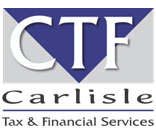By the end of February, most taxpayers are looking for every opportunity to reduce their tax liabilities.
“With the steady increase in popularity of section 12J investments, taxpayers are more and more looking to use this tax deductible investment class as a means to significantly reduce their tax liabilities,” according to Jonty Sacks, a partner at Jaltech.
What a taxpayer must not do is rush into a section 12J investment without having a clear understanding of their financial position, the section 12J investment under consideration and the section 12J market, as they could easily find themselves in a 5 year relationship which they may regret.
For taxpayers who are looking to understand the Section 12J market, here are 12 Section 12J tips every taxpayer and financial adviser should consider:
Returns
Every section 12J investment offers taxpayers the same tax benefit, however, they don’t all offer the same investment returns. Make sure you compare various section 12J investments’ actual returns in order to understand what the market has to offer.
Make sure the fees are justified
There is no point in taking investment risk if the fees charged when the investment does perform are so excessive that your returns are almost completely eroded. Make sure the performance fees are charged above the gross investment amount and not on the net investment.
Avoid the February rush
Taxpayers only need to invest in a section 12J investment on or before the last day of February – this is February 29 for the current tax year – so avoid being pressured into a decision by February 25.
Don’t fall to the back of the queue
One of the biggest issues in the section 12J market is that a number of section 12J investments have simply failed to invest last year’s investors’ capital.
Avoid investing in section 12J investments where your capital will simply fall to the back of the queue. Make sure the section 12J investment has a large pipeline of new investment opportunities and has a track record of deploying 80% or more of its capital raised.
Targeted vs actual returns
Make sure to understand what the targeted returns are and how these compare to the actual returns. Be aware of investments which are underperforming relative to expectations.
Net vs gross returns
To have a clear understanding of the performance of the investment, make sure you understand what the section 12J investment’s returns are net of all fees and taxes.
Especially ensure that the net of tax figure is after dividend withholding tax and the annual fee. If not, then the return would be overstated when compared to a return net of all fees and taxes.
Don’t stretch your budget
Section 12J investments have a wide range of minimum investment amounts, starting from R100 000 to R2 000 000, make sure you don’t invest more than you can afford to.
There are income options
Most section 12J investments target to return dividends to investors each year and in some cases twice a year. If you need some cash flow during the investment term then look for a section 12J investment which has a track record of paying dividends.
Avoid too good to be true investments
Like with anything in life, if the targeted investment returns are through the roof or if you don’t have to put a cent down to invest, think twice before investing. Make sure, if you are going to take a large risk that the upside far outweighs the downside.
Guarantees
A number of section 12J investments now offer some form of guarantee, whether it be a guaranteed return or a guaranteed exit. Be sure to understand who is standing behind the guarantee and whether the guarantee can be enforced.
Generally, these guarantees are quoted before fees and taxes and after accounting for these, the guarantees are far less attractive.
Risk profile
The section 12J investment market is extremely diverse with investors having the option of investing in high growth riskier investments, mid tier conservative investments and low risk capital protection investments. Select one or more Section 12J investments which meet your risk appetite.
Tax aggressive structures
There are a number of section 12J investments which look to offer investors tax aggressive structures, such as an exit option before the 5-year lock-in period elapses, or repayment of your original capital early through extraordinary dividends.
In order to be sure that you are investing in a sustainable and compliant investment, avoid tax aggressive structures.
Section 12J investments are excellent investment options for taxpayers who are going to be paying a large amount of capital gains tax or income tax before the end of February. Taxpayers, however, must make an informed and calculated investment decision.
Article: Fin24




